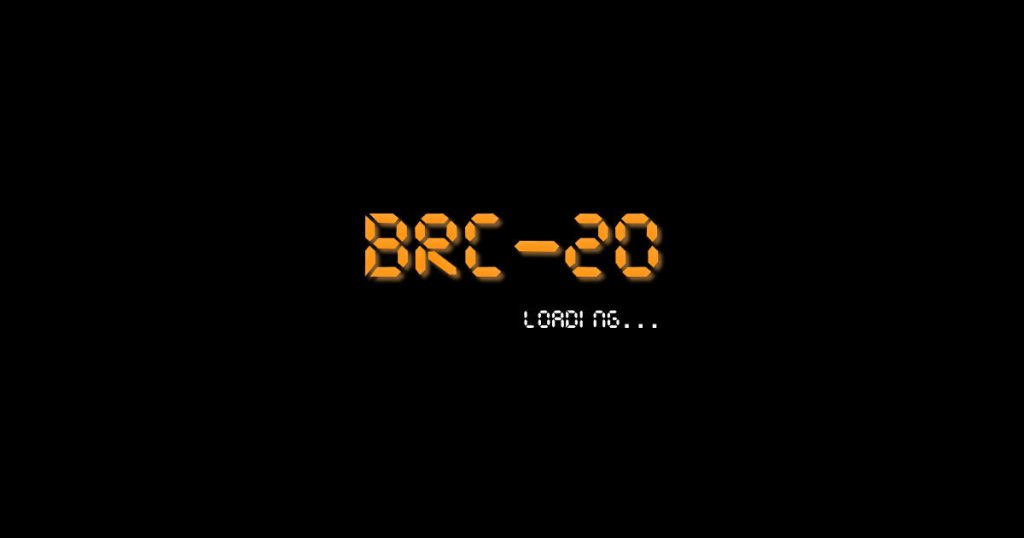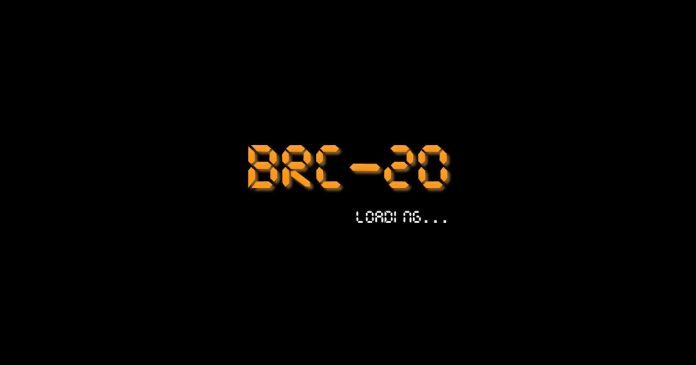
Until the beginning of 2023, only one asset existed on the Bitcoin network: Bitcoin. Although much talk has been about diversifying assets like other networks, things still need to look better.
Until March 2023, through the Ordinals protocol and Inscriptions mechanism, an anonymous developer named “Domo” created the BRC-20 token standard, allowing developers to deploy, mint, and transfer tokens on the Bitcoin blockchain.
What is BRC-20 token?
BRC-20 can be considered the ERC-20 equivalent of Bitcoin. However, this standard does not support smart contracts similar to ERC-20 as of press time (January 6, 2023), possibly because it is still experimental.
In essence, BRC-20 is an experimental token standard that, like Ethereum’s ERC-20 token, allows the creation and transfer of fungible tokens using the Ordinals protocol on the developed Bitcoin network developed by the Bytom team in 2022. However, users should be cautious and aware of the potential risks when using these tokens, as they are still experimental.
BRC-20 vs ERC-20
There are some fundamental differences between BRC-20 and ERC-20 tokens. While the ERC-20 token uses the Ethereum blockchain, the BRC-20 token uses the Bitcoin blockchain. The ERC-20 uses a Proof Of Stake (PoS) mechanism, while the BRC-20 token standard uses a Proof Of Work (PoW) mechanism.
EVM compatibility is the main distinction between the two networks. Creating various programmable tokens and financial products by developers is impossible with BRC-20 because smart contracts are not supported.
Strengths and Limitations of the BRC-20 Tokens
In General, the BRC-20 Token Standard has both advantages and limitations.
Some of its benefits include security, compatibility, and growth potential.
In terms of security, Bitcoin is still considered top. Its PoW mechanism makes it difficult for hackers to penetrate, ensuring users enjoy the best experience transferring blockchain tokens.
This is a huge advantage in compatibility as they allow Bitcoin and BRC-20 tokens to integrate seamlessly with the blockchain. It will enable normal use of the network’s existing infrastructure, such as wallets and exchanges that support the Bitcoin network, paving the way for more possibilities on layer 1 blockchains, thus rapidly gaining acceptance in the community.
Regarding growth potential: As more projects adopt the BRC-20 standard, new and improved uses will inevitably emerge. This, coupled with the large and diverse user base of the Bitcoin network, is sure to attract the attention of developers, investors, and users, fueling the expansion and growth of BRC-20.
The launch of BRC-20 could also be the launch point of decentralized finance because, unlike Bitcoin, BRC-20 is flexible and can be merged with Defi protocols.
In addition, limitations on scalability, low transaction speed, high network failure, or limited interoperability
While BRC-20 tokens are considered to be fungible, it may be more accurate to call them semi-fungible as they can only be exchanged for a set amount. It is limited because it is incompatible with EVM, and developers cannot access or build some resources on the network. This can lead to a smaller ecological system and restrictive regimes.
Meanwhile, there is a high probability of increasing gas fees on the network because of the valuable block space standard BRC-20, causing network congestion and low transaction speeds.
BRC-20 tokens are still in beta, which means they are still under development and may pose certain risks to users, as smart contracts for BRC-20 tokens can be vulnerable to bugs and attacks, resulting in the loss of user funds.
In addition, the BRC-20 token has yet to be widely adopted, and there may be a limited payment regime in the crypto market, which may affect the ease of buying and selling the tokens.
BRC-20 Token Market Overview
Although it was only created two months ago, as of May 17, 2023, the market appeared with 24,677 BRC-20 tokens with a total capitalization of more than 500 million USD, sometimes reaching over 1 billion USD.
The ORDI token, known as the first token of BRC-20, accounts for more than 50% of the total market capitalization of BRC-20. They were created to introduce a new token standard. After that, the popularity of ORDI increased as many developers “followed the trend” to develop new tokens.
How to buy BRC-20 tokens?
Buy on exchanges
It is the easiest way to own BRC-20 tokens. However, as of the time of writing (May 2023), only some exchanges are still listing this token, and the number of listed tokens is also minimal. You can find your favorite BRC-20 token listings at https://brc-20.io/
Buy on Unisat
Create a wallet
Step 1: Download the Unisat wallet here (currently not supported on iOS and Android) and create an account. Note you need to write down 12 security characters.
Step 2: After recording the character, the page will go to the section to create a new wallet address. You choose the first category and leave the rest blank.
To be able to buy and sell BRC20 tokens on Unisat, you need to have at least 20 OG.
Conclusion
Although the token standard was created relatively late compared to ERC-20, BEP-20, TRC-20, etc., BRC-20 has developed a fever covering the entire cryptocurrency market.
While even their creators seem undecided on the long-term viability of BRC-20 as an official token standard, the open-source developer community has seen the potential of BRC-20.
However, BRC-20 is still in the testing phase; we recommend you consider it carefully before investing, as they also have potential risks.


